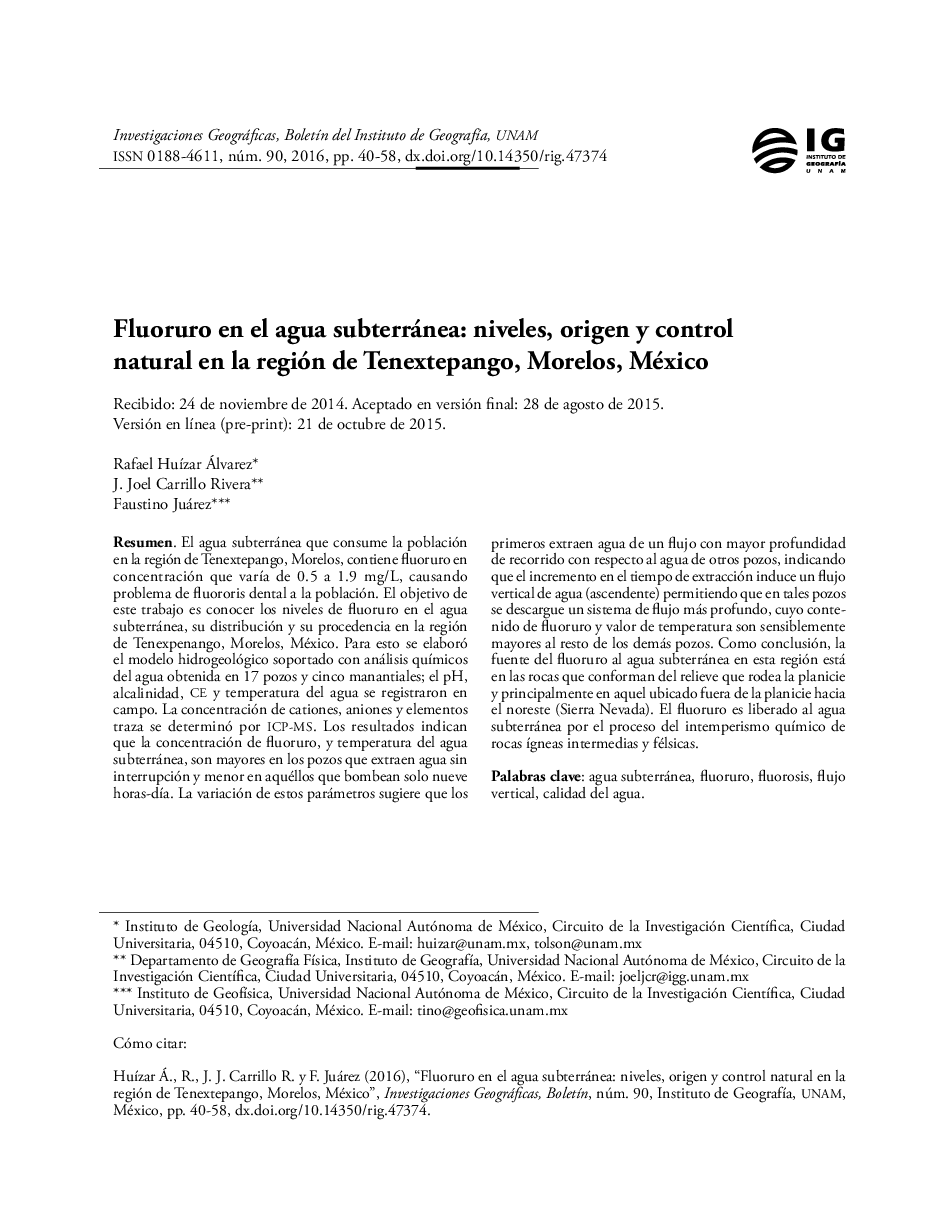| Article ID | Journal | Published Year | Pages | File Type |
|---|---|---|---|---|
| 7474359 | Investigaciones Geográficas, Boletín del Instituto de Geografía | 2016 | 19 Pages |
Abstract
The temperature value and fluoride content in the extracted water in the area vary depending on the extraction time (ie, the longer and/or higher extraction rate). The increase of these parameters show that a continue extraction induces the arrival of water from a deeper regional flow containing fluoride in a significant high content as compared to the shallow water. The control of water extraction with low fluoride content requires conducting control tests on the boreholes allowing to improve the natural quality of the extracted water, allowing a reduction of the fluoride content by setting fluoride vs. temperature at different time intervals after extraction started; and fluoride vs. extraction rate. It becomes important to test different extraction rates (produce different hydraulic gradients in the extraction borehole) to define the extraction rate (or extraction time) with the least fluoride content possible to achieve a fluoride control. The understanding of the groundwater functioning under extraction may avoid additional side-effects of fluoride induction. This could take advantage of the natural system without installing unnecessary and high cost treatment plants which would require costly maintenance, and specialized personnel, which, however, will produce a hazardous sludge that need to be properly managed to avoid additional health risks. It was found advisable that the inhabitants of this region decrease by natural means the fluoride inflow from boreholes containing high fluoride, while a diet with high calcium content should be implemented.
Related Topics
Social Sciences and Humanities
Social Sciences
Geography, Planning and Development
Authors
Rafael HuÃzar Álvarez, J. Joel Carrillo Rivera, Faustino Juárez,
